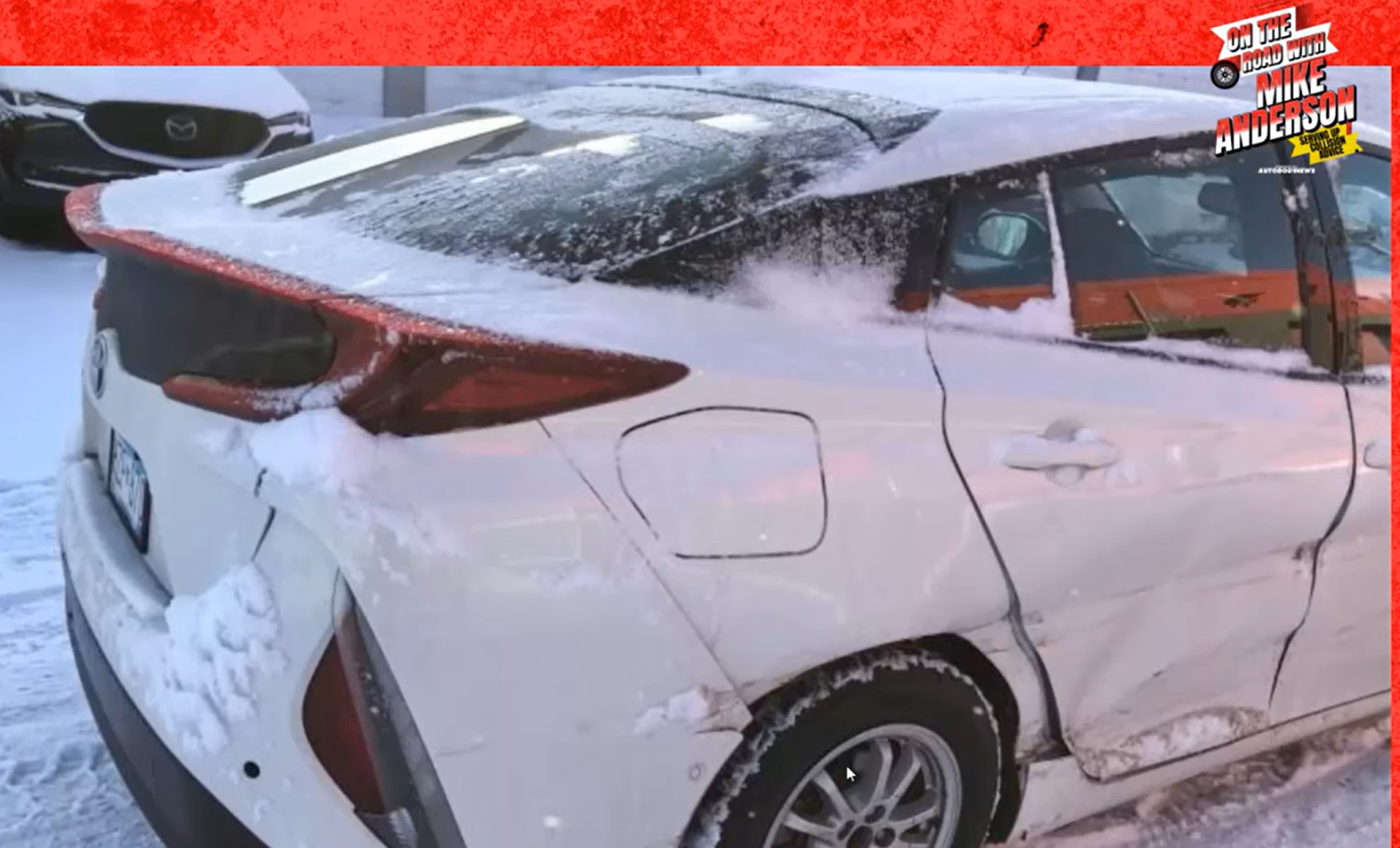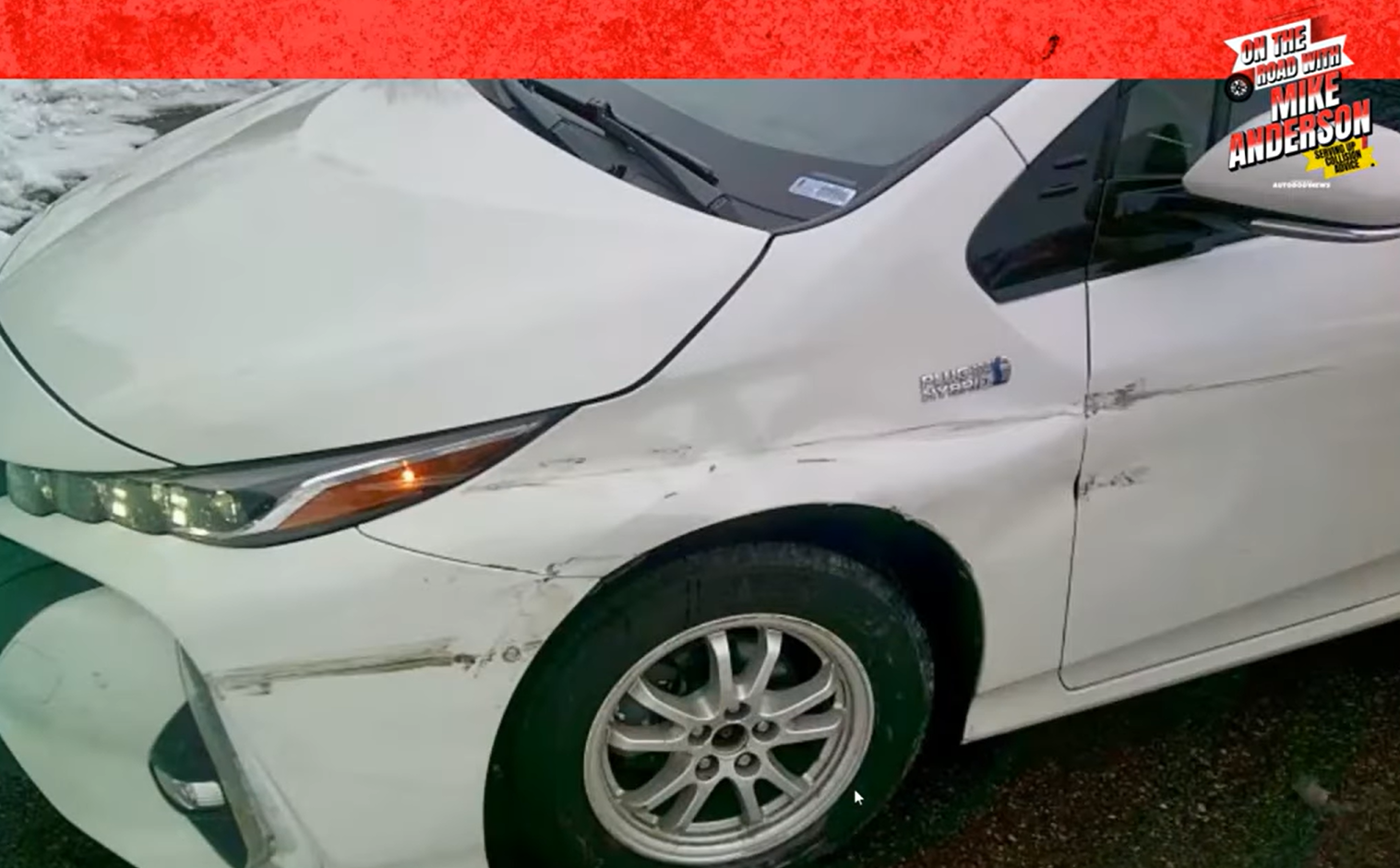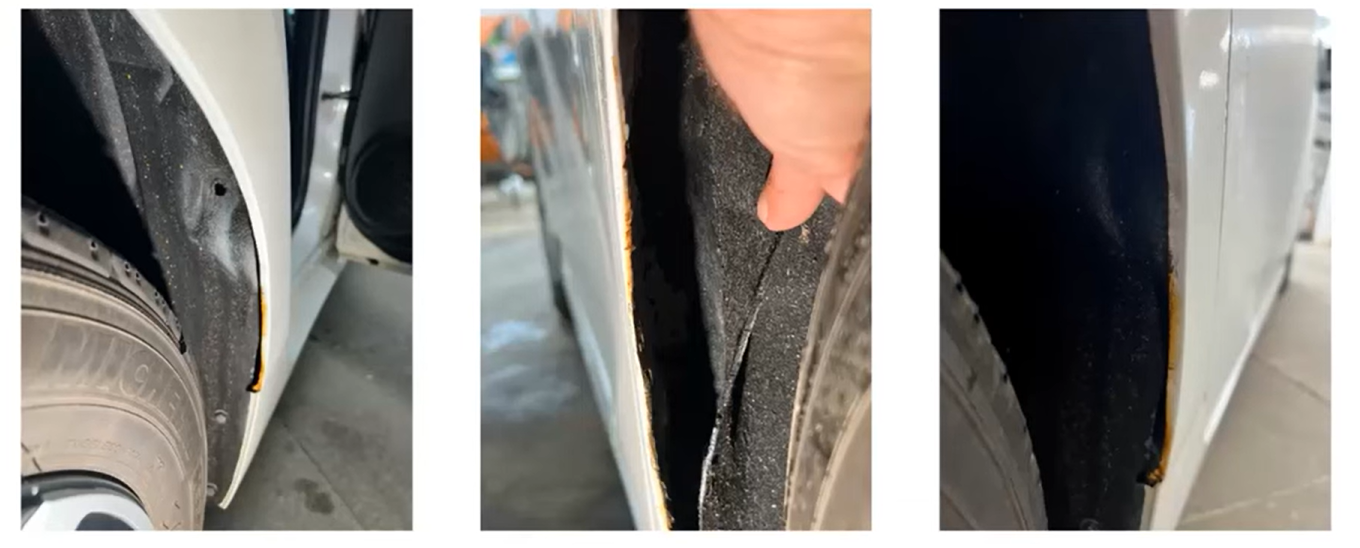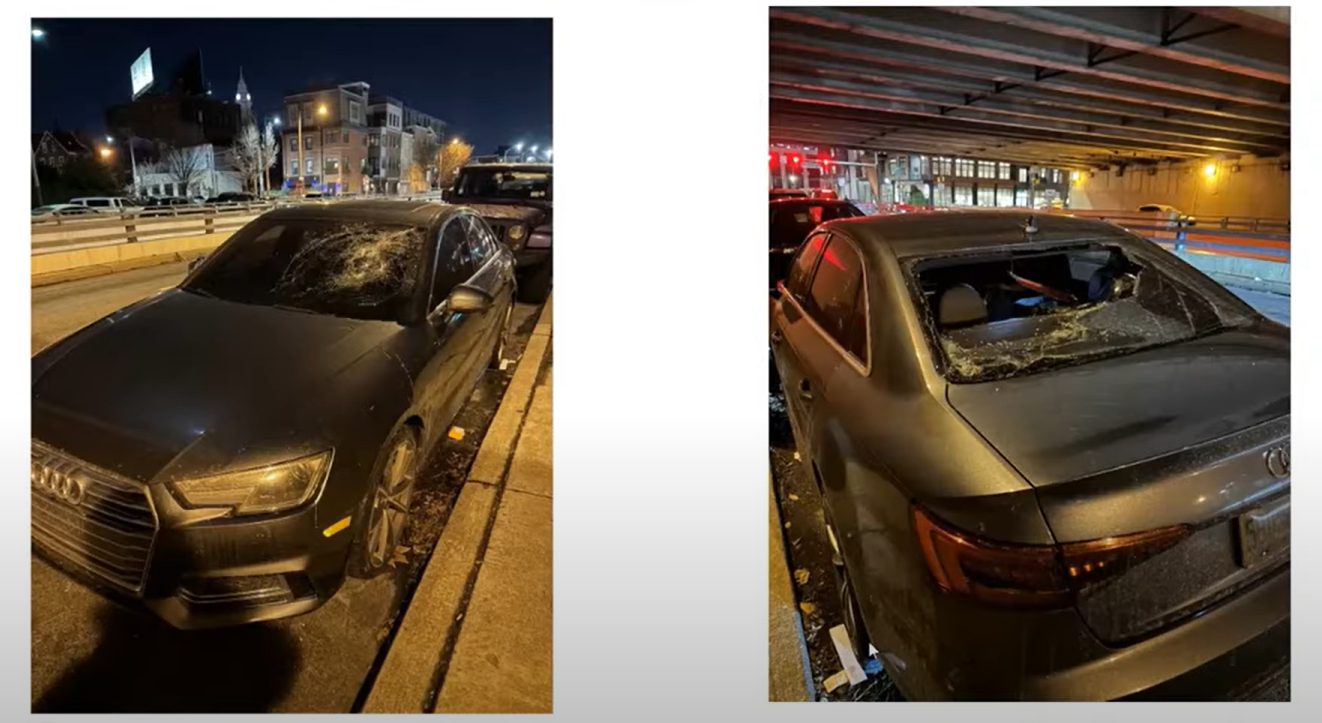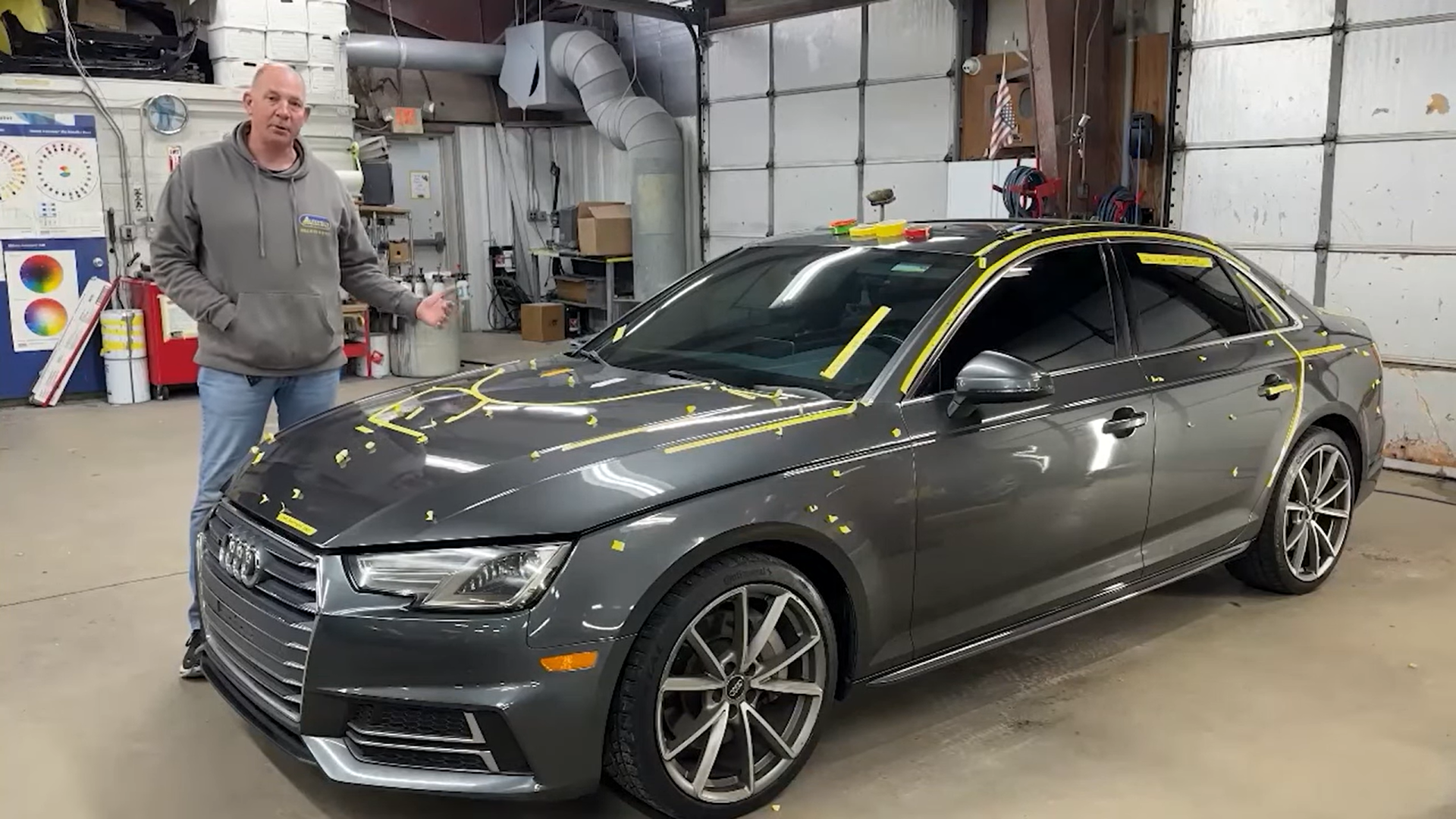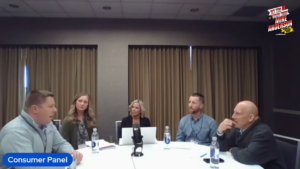
Mike Anderson podcast highlights real customer experiences with repair shops and insurers
By onCollision Repair | Repair Operations
Imagine picking up your vehicle from a repair facility and finding out there are glass shards in the vents, or waiting 20 months with little communication about repairs, only to pick your vehicle up with a rusty quarter panel, a reconditioned door that hadn’t been seam sealed, and no evidence of completed safety inspections.
The latest episode of the podcast “On the Road with Mike Anderson” includes stories from two customers, the roles insurance companies and repair facilities played in the customer experience, and the improper and unsafe repair of their vehicles.
The episode referred to the customers only by their first names and avoided the names of shops and carriers with whom they had poor experiences.
For Brook, of Minnesota, wrecking her Toyota Prius Prime Premium was especially devastating since it was the first car she bought and her first time in a car accident. She told Anderson that, three months after her purchase, she spun out during a blizzard and damaged both sides of the vehicle.
“My insurance company gave me a list of 15 DRP shops, and they were all booked out six to eight months… so I thought I’d go with a family recommendation, which is a shop down the road from my house,” Brook said. “I looked them up, they had a 4.7-star [Google] review, so that’s where I went.”
However, she dropped her vehicle off in March 2023 and didn’t pick it up until November 2024. During those 20 months, she didn’t have a rental and drove her father’s old truck. She said she’s still dealing with a botched repair.
Brook received several estimates, first $15,000 at a DRP shop, then $19,000, and finally $24,000.
After reviewing the estimate, podcast co-host Sheryl Driggers, also with Collision Advice, said Brook received a poor initial estimate.
“If someone had spent some time with her at the very beginning, really looking at this vehicle and researching repair procedures, I think her experience would be a lot different,” she said.
Anderson read off the estimate that the shop put four reconditioned wheels on the vehicle and three used doors and while OEM fenders were used, one was improperly painted and is now rusted.
He said the estimate is concerning; however, he’s more concerned about what items are missing on the estimate, including safety inspections.
“I don’t care who you are, if you’re an insurance company or a body shop and you’re like, ‘Well, I don’t know if these safety inspections are necessary or not,’ I get it when you’re questioning those on a bumper cover, but this vehicle got four doors and a major repair on a quarter panel. I do not think that is a minor accident,” Anderson said. “A big F on safety inspections.”
Brook called communication from the shop so-so and said she received several excuses for the delays from OEM parts on backorder and having ordered the wrong parts to out-of-town trips and family illness.
“My car was stuck,” she said. “I thought about going and taking my car back.”
Nine months into the ordeal, Brook said she contacted her insurance company for answers. She was told her vehicle was at a non-DRP shop, so there wasn’t anything they could do — she would have to “stick it out.” After calling two more times, a year in and then at 18 months, Brook said she didn’t receive any help from her carrier.
“I would have liked them to explain the whole process to me because this was my first car accident, first car I’ve owned,” Brook said regarding her claim experience. “I felt like I was guided with, ‘Here’s your next step,’ but what are the steps to follow? I would have liked all that in the first phone call, so I could’ve planned out my whole journey.”
After picking up her Prius, Brook returned it to the shop five times, and it’s still not fixed correctly, she said. After spending hours researching to find a different repair facility, she is now working with a different shop.
“The owner of that shop took my car and noticed what safety procedures not on the estimate,” Brook said. “They helped walk me through what the shop did not do because the shop never did anything that had to do with my safety. I think that was the biggest thing of what went wrong. I don’t feel the safest in my car.”
She added that she wished the shop had explained the repairs to her.
“If it’s for safety and it really matters, I’ll pay more for it to work right,” she said.
In response to a viewer’s question about best practices to communicate with customers, Anderson said education is key.
“Don’t come at it from a high level but explain to them why and explain to them the importance,” he said. “The answer lies in getting the consumer involved. I think most people only spend five to 10 to 15 minutes with that customer at the beginning of the interaction when they come to the shop… you’ve got to spend more time with that customer at the top.”
The front and back windshields were smashed in and there were dings and dents on the hood and one side of the vehicle. When he picked it up from the shop, Brian said there was still glass in the seat and vents, plus several other problems. He immediately went to a different shop for a post-repair inspection and re-repair. The results were astounding.
Dean Massimini, president of Autotech Collision Service in New Jersey, conducted the post-repair inspection. He called the repair horrendous and a mess.
Massimini noted the Audi still had dents and waviness all over. He said there was chipped paint and an area where the paint was already starting to fail and crack, plus the clearcoat was running off the edges. In addition, Massimini found glass in the car floor, in the seats and seat tracks, in the trunk, and inside the vents.
Overall, the color match wasn’t good, there were hard tape lines, and missed scratches, he said. The vehicle also wasn’t covered when it sat outside during rain and a snowstorm, Massimini said.
“This car should’ve 100% been totaled,” he said. “This thing is a total disaster and this customer trusted this shop and his insurance company to do the right thing and send him to the right place. Instead of totaling the guy’s car because of the safety reasons, they tried to make a quick job out of it and make a mess of it; let the guy drive away with an unsafe vehicle that’s totally loaded with glass. This is completely unacceptable.”
Brian said he regretted going to a “big chain shop” that his insurance carrier recommended. And something the carrier said at the beginning of his claim process later struck him as odd, he said.
They told him, “‘They make sure that they don’t overcharge for the parts and stuff,'” Brian said. “I realized later why would I care what the insurance company’s paying for? The parts I want are the best parts in my car.
“I felt just like another number and that they [insurance carrier] were recommending the shop that they sent me to just because they knew it would benefit their own bottom line rather than sending me to a shop that they recommend based on merit and other reviews.”
One of the three customers Anderson interviewed said he had a pleasant claim and repair experience.
Tim, who lives in Wisconsin, filed a claim for front bumper damage to his GMC Sierra after hitting a deer.
Calling the claim process “simple and painless,” he said he took his truck to the same repair shop he’s been to since he started driving.
“From step one to picking up my truck, everything went really smooth with how they handled it,” Tim said. “Communication was great. I think it just goes to show doing your research with insurance companies can go a long way when it comes to actually having to file that claim.
“Put your customer first, that’s what it’s all about at the end of the day. Safety is important to everybody, so things should be fixed correctly, and that’s how I feel I got treated.”
As for the shop, he said he heard from them once or twice a week with updates on the repair. When he picked it up, everything was repaired and clean, he said.
“Communication is key, whether good or bad, you want to know what’s going on with your vehicle,” Tim said. “I truly feel like if it was the roles were reversed and it was their car coming in, how would they want to be treated and I feel like some places forget about that. We’re a customer, we want a good experience. They want more business, we’re not going to give more business or [will] tell people to go to other shops if it’s a poor experience.”
The full interview, On the Road with Mike Anderson: Real Stories from Collision Repair Customers, can be found on the Autobody News YouTube channel.
Images
Featured image: (From left) Customers Tim and Brook; Collision Advice’s Sheryl Driggers; customer Brian and Collision Advice President Mike Anderson speak during a live podcast in April 2025. (YouTube screenshot)
All other images from podcast YouTube video

